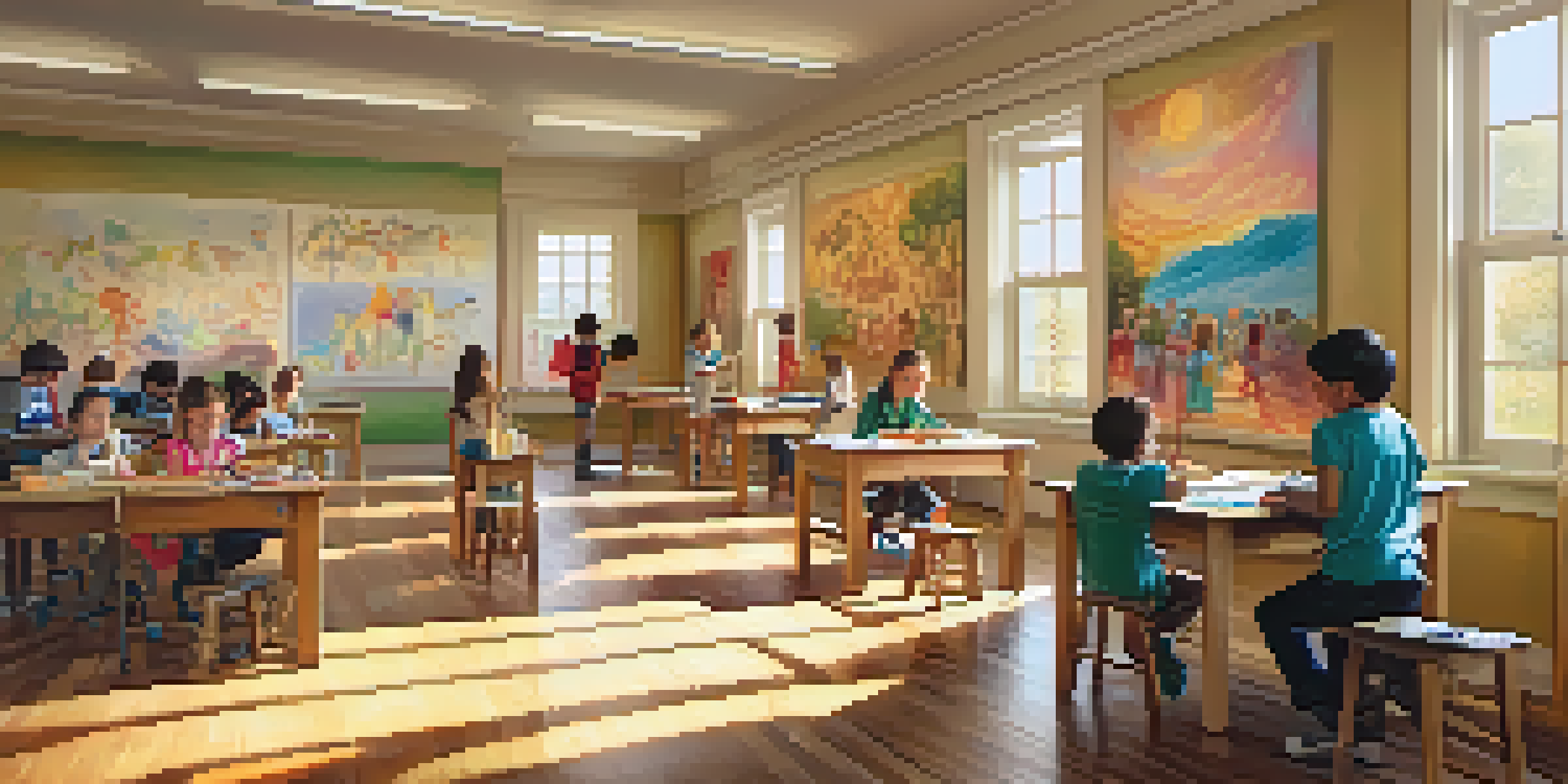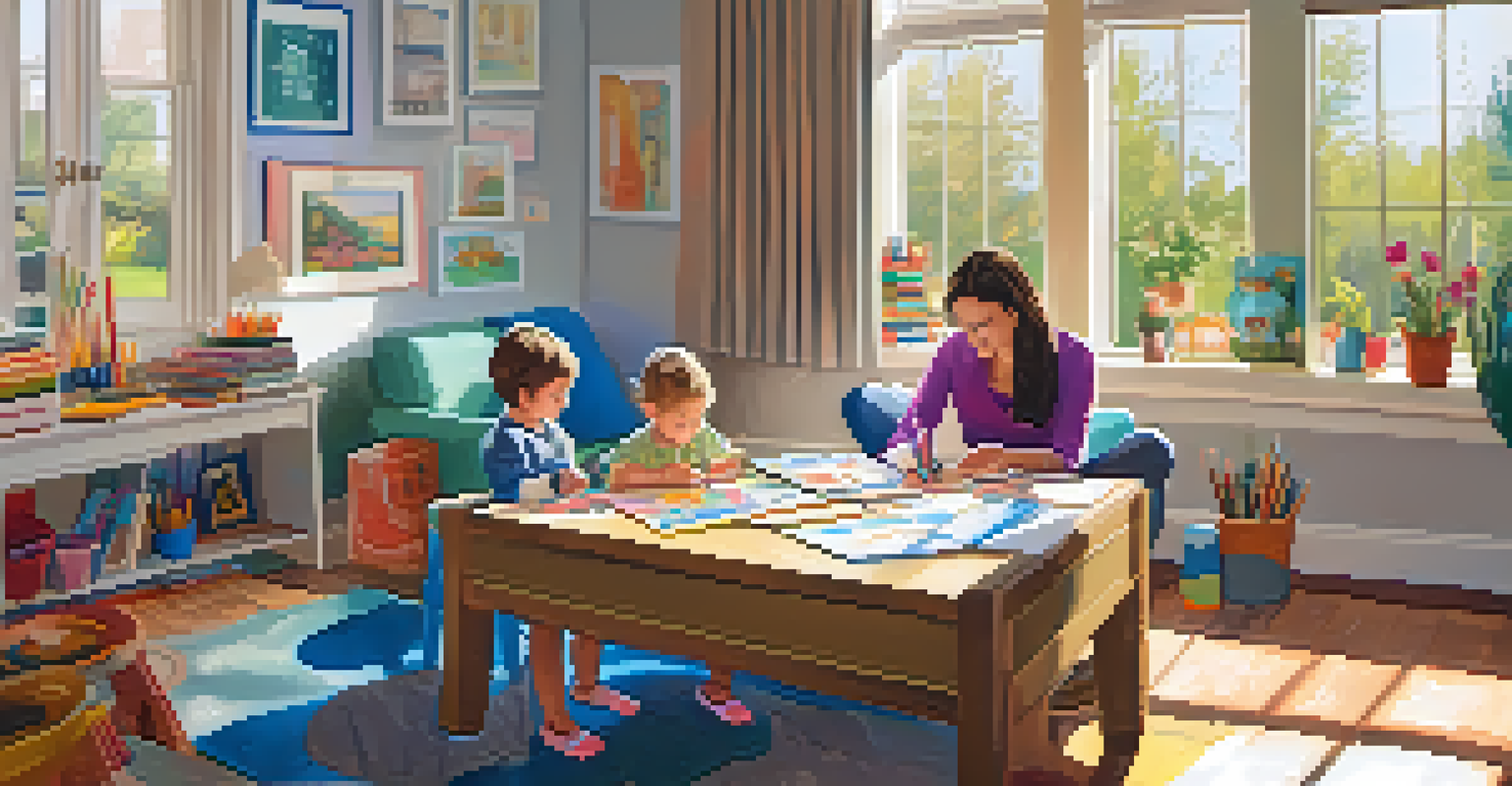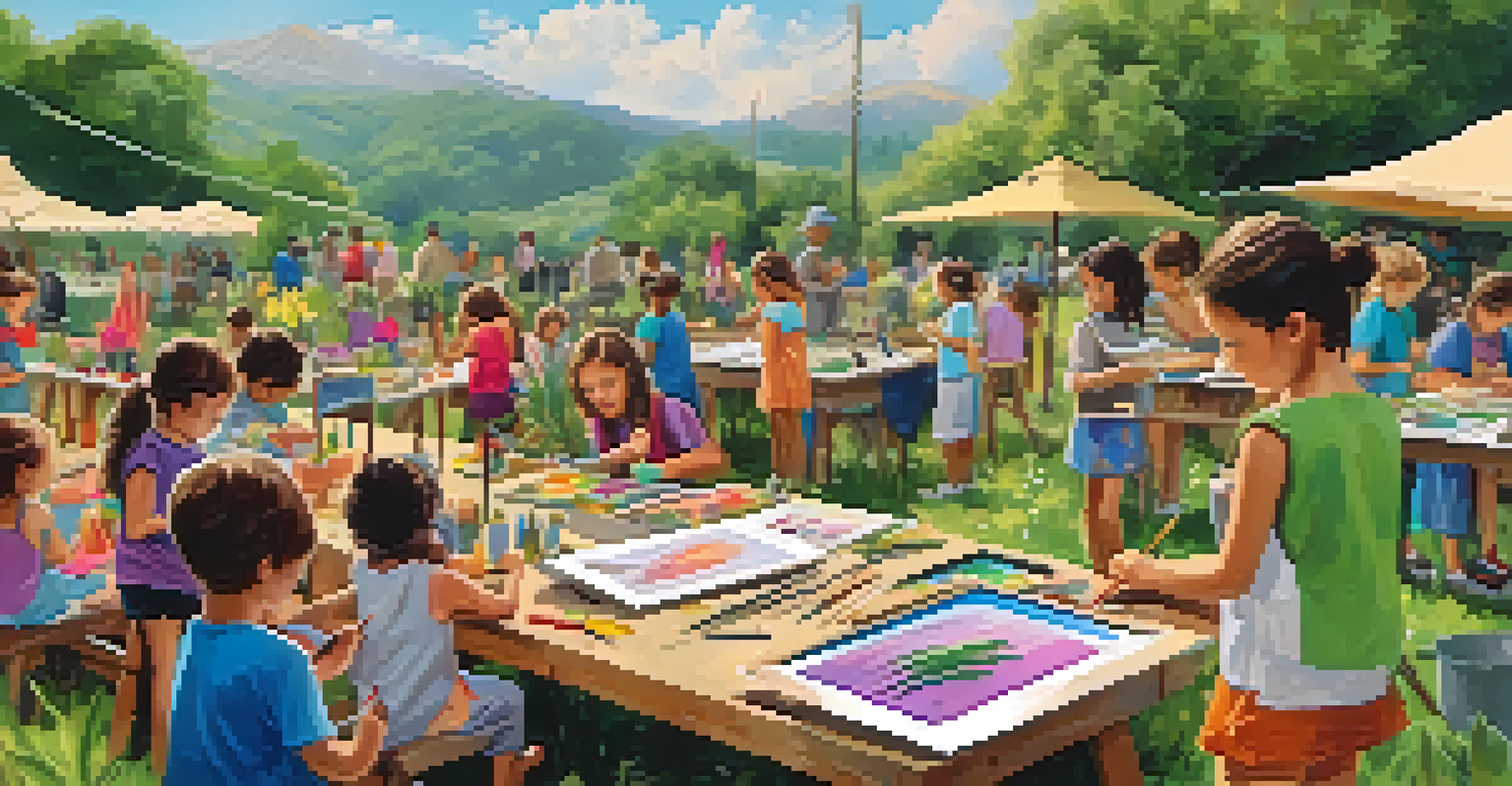The Intersection of Art and Early Childhood Education

Understanding the Importance of Art in Early Education
Art plays a pivotal role in early childhood education, serving as a gateway for creativity. When children engage with art, they express their thoughts and feelings in unique ways, which can be particularly beneficial for their emotional development. It nurtures their imagination, allowing them to explore different perspectives and solutions to problems.
Every artist was first an amateur.
Moreover, incorporating art into the curriculum helps develop fine motor skills. Activities like painting, drawing, or sculpting require hand-eye coordination and dexterity, which are essential for children's overall physical development. This hands-on experience not only keeps children engaged but also builds their confidence as they create something tangible.
Lastly, art fosters a sense of community and collaboration among young learners. Group projects encourage teamwork and communication, as children share ideas and learn from one another. This collaborative spirit lays the foundation for social skills that will benefit them throughout their lives.
The Cognitive Benefits of Artistic Expression
Engaging in artistic activities stimulates cognitive development in young children. When they create art, they are not just using their hands; they are also exercising their brains by making decisions and solving problems. For instance, choosing colors or deciding how to represent an idea encourages critical thinking and enhances cognitive flexibility.

Additionally, art can improve language skills as children describe their creations. This process encourages vocabulary expansion and helps them articulate their thoughts more clearly. When children talk about their artwork, they learn to express themselves, which is vital for effective communication.
Furthermore, integrating art with other subjects can deepen understanding. For example, a project that combines science and art, like creating a model of the solar system, allows children to explore concepts in a fun and engaging way. This interdisciplinary approach not only makes learning enjoyable but also reinforces knowledge retention.
Art as a Tool for Emotional Development
Art provides a safe outlet for emotions, making it an essential tool for emotional development in early childhood. When children express their feelings through art, they can process complex emotions like joy, anger, or sadness. This creative expression helps them understand and manage their feelings more effectively.
Art is not freedom from discipline, but disciplined freedom.
Moreover, creating art can be therapeutic for children, offering a sense of calm and relaxation. Activities like coloring or painting allow them to focus their energy and attention, providing a break from the chaos of their surroundings. This mindful engagement promotes emotional well-being and resilience.
Lastly, art encourages self-reflection and self-awareness. As children create, they often contemplate their experiences and feelings, which fosters a deeper understanding of themselves. This introspection is crucial for their emotional growth and helps them build a strong sense of identity.
Fostering Creativity Through Diverse Artistic Mediums
Exposing children to a variety of artistic mediums can significantly enhance their creativity. Whether it’s painting, sculpting, or digital art, each medium offers unique experiences and challenges. By exploring different forms of art, children learn to think outside the box and experiment with new ideas.
For instance, working with clay allows children to manipulate materials and understand three-dimensional space. On the other hand, digital art introduces them to technology, blending traditional creativity with modern tools. This diversity not only keeps their interest alive but also prepares them for a world where creativity is increasingly valued.
Furthermore, encouraging exploration across cultures and artistic traditions can broaden children's horizons. Learning about different artistic styles from around the world fosters appreciation and respect for diversity. This global perspective enriches their creative expression and nurtures open-mindedness.
The Role of Educators in Integrating Art
Educators play a crucial role in integrating art into early childhood education. They can create a supportive environment that encourages creativity and exploration. By providing access to various materials and resources, teachers can inspire children to experiment and express themselves freely.
Moreover, educators should be trained to recognize the value of art in child development. Understanding how art contributes to cognitive, emotional, and social growth allows teachers to incorporate artistic activities meaningfully. This knowledge empowers them to design lessons that blend art with other areas of learning.
Lastly, fostering partnerships with local artists or art organizations can enrich the educational experience. Inviting professionals into the classroom exposes children to different artistic perspectives and techniques. These collaborations not only enhance learning but also connect children with their community.
Parental Involvement in Artistic Education
Parental involvement is vital in nurturing a child's artistic journey. When parents engage in creative activities at home, they reinforce the importance of art in their child's life. Simple acts like drawing together or visiting art museums can spark a child’s interest and appreciation for the arts.
Additionally, encouraging parents to participate in school art projects can strengthen the home-school connection. When families collaborate on artistic endeavors, it fosters a sense of community and belonging. This involvement not only benefits the child’s learning experience but also enhances family bonds.
Moreover, parents can provide a rich environment for creativity at home by offering diverse materials and opportunities for exploration. Whether it’s crafting, cooking, or gardening, integrating art into everyday life can ignite a child’s imagination and foster a lifelong love for creativity.
Measuring the Impact of Art on Learning Outcomes
Measuring the impact of art in early childhood education can be challenging but essential. Educators can look for changes in children's engagement levels, creativity, and emotional expression as indicators of art's influence. Observing how children interact with art activities can provide valuable insights into their development.
Additionally, assessments can include portfolios of children's artwork, showcasing their progress and growth over time. These portfolios serve as tangible evidence of their creative journey and can highlight their cognitive and emotional advancements. This method allows educators and parents to celebrate accomplishments in a meaningful way.

Furthermore, research has shown that integrating the arts into education can lead to improved academic performance. Studies indicate that children exposed to artistic experiences often exhibit better problem-solving skills and higher levels of motivation. This evidence underscores the importance of prioritizing art in early childhood education.